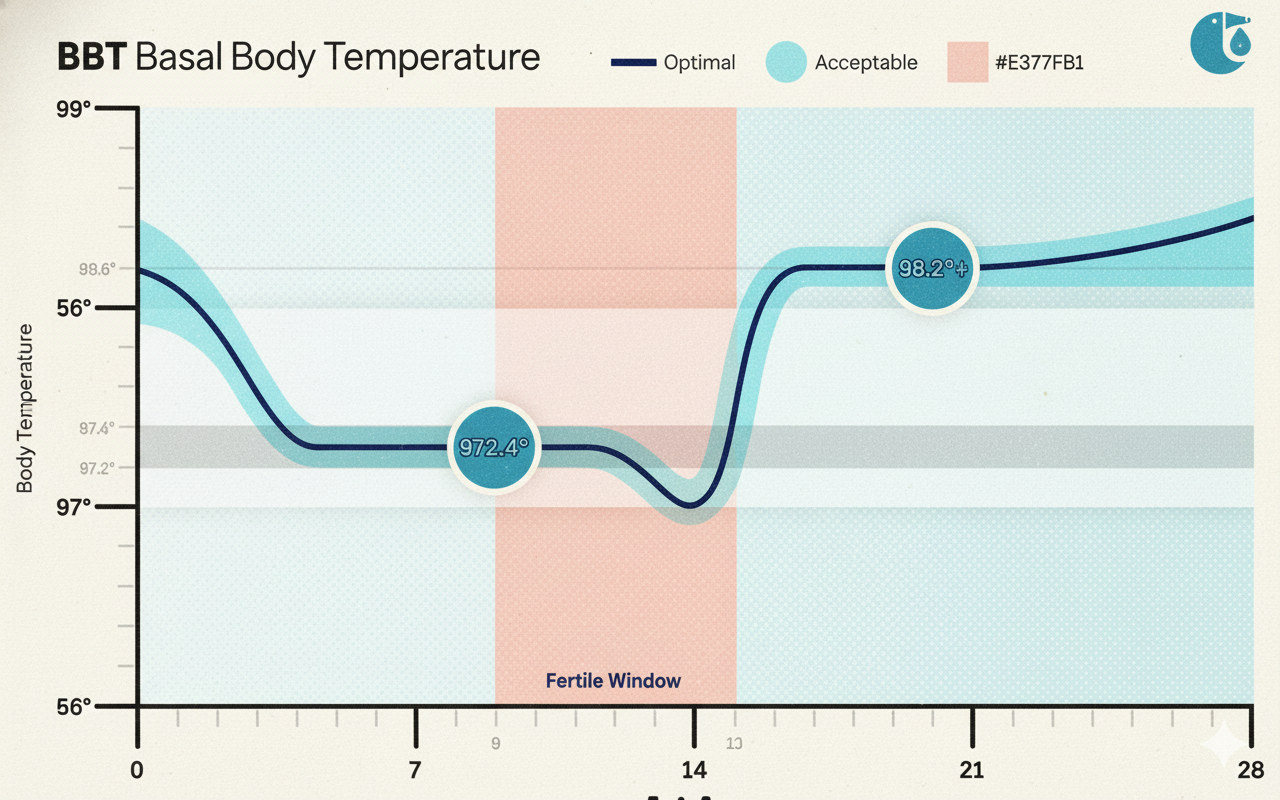Understanding The Phases Of Your Menstrual Cycle

If you’ve been tracking your cycles using a basal body temperature (BBT) chart, you’ve probably seen your temperature drop and rise throughout your menstrual cycle. These temperature changes signify important hormonal shifts.
Understanding what's happening in each phase of your cycle can help you pinpoint fertility issues, and then start making a plan to correct them.
The First Half of Your Cycle: The Follicular Phase
Your BBT chart should begin the day your period starts. This is usually marked by a lower basal temperature, typically in the 97’s. The day your period begins is the first day of what’s called the follicular phase.
During this phase, the follicles in your ovary are maturing, a process controlled by follicle-stimulating hormone (FSH). While each follicle contains an egg, only one of the follicles will become the “dominant follicle” and be released during ovulation.
The developing follicles produce estrogen at high rates. Your body knows it’s time to ovulate once enough estrogen has been produced, signifying that the egg is ready to be released.
The Middle of Your Cycle: Ovulation
Luteinizing hormone (LH) begins to be released by your body as a result of the high levels of estrogen produced during the follicular phase. This surge in LH causes the egg to burst out of the follicle.
Ideally, ovulation will occur on day 14 of your cycle and will show up in your BBT chart as a rise in temperature.

The Second Half of Your Cycle: The Luteal Phase
The luteal phase officially begins once ovulation occurs. Your temperatures will remain higher in this phase, normally in the 98’s.
Leftover FSH and LH cause the dominant follicle to turn into the corpus luteum. The corpus luteum is very important in the luteal phase because it becomes the primary source of progesterone.
Progesterone thickens the uterine lining, readying your uterus for implantation. Without adequate progesterone, a pregnancy can’t be sustained in its early days.
Unless fertilization occurs and pregnancy hormones (hCG) are present, the corpus luteum will die within 14 days, causing progesterone levels to drop. Then your period will begin, starting the follicular phase all over again.
Make an effort to understand these different phases of your cycle. Once you have a good grasp of what’s going on with your body every month, you’ll be able to predict ovulation successfully, pinpoint issues in your follicular or luteal phases, and be able to conceive more easily.
Whether you’re a pro at BBT charting or completely new to the method, be sure to start tracking your temperatures each morning in a system like Conceivable.
Conceivable’s integrative platform not only provides BBT tracking, but also offers sophisticated monitoring tools, proven formulations, and wellness plans to offer an evolved approach to conception. Prepare to be amazed at the amount of information you can learn by simply sticking a thermometer in your mouth each morning!
